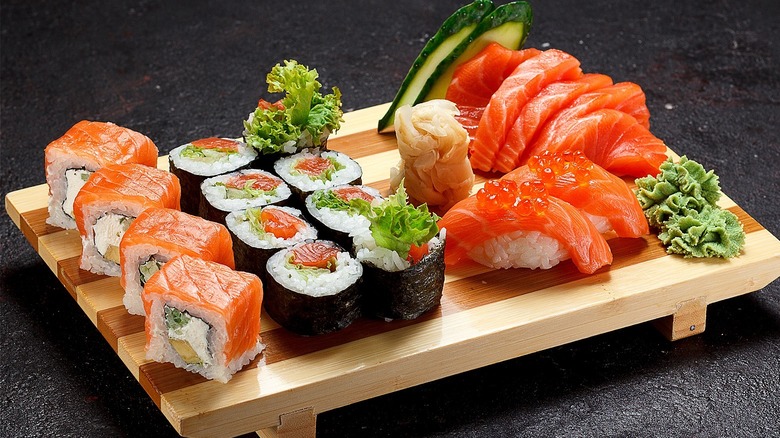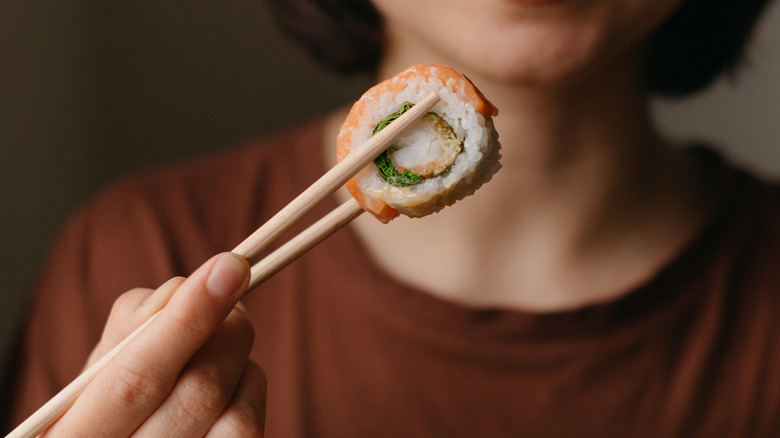Expert Explains Why You Should Never Eat Sushi And Ginger At The Same Time
If you've ever bought sushi and been provided with the standard accompaniments of soy sauce, ginger, and wasabi, you might have wondered exactly what to do with it. After all, if you're not Japanese and there's no expert to tell you, you'll probably take it upon yourself to assume what these things are for. In Western society, sauces that come with things like a Chick-fil-A meal or your McDonald's fries, whether used as a dip or to put on the top of your food. So, it might stand to reason that you'd put the soy, ginger, and wasabi on top of your sushi as a sort of flavor enhancer.
Many people mix their wasabi and soy together, but as First We Feast points out, wasabi loses its spiciness when put in soy sauce because of a chemical component that is a type of mustard oil. While sushi has been available in America since the '60s, the truth is that we developed our own way to eat it without finding out the correct way to begin with. The same goes for the ginger that comes with it — many people put this on top of their sushi. Mashed reached out to Chef Jeff Osaka, owner of the conveyor belt sushi joint Sushi-Rama and Colorado noodle shop Osaka Ramen, to find out exactly how we're meant to be eating sushi and ginger.
A little sushi etiquette goes a long way
The reason you always get pickled ginger with your sushi, according to Chef Jeff Osaka, is that it's a tradition that comes from Japanese sushi bars. In Japan, Osaka told Mashed that serving pickled ginger with sushi started between the 1600s and 1800s. "Its intention is to cleanse the palate between bites, and act as a digestive," Osaka says. Using ginger as a digestive aid has a long history in alternative medicine, for the root herb is often recommended for various stomach ailments. According to John Hopkins Medicine, "eating ginger encourages efficient digestion, so food doesn't linger as long in the gut." However, Osaka says that putting ginger directly on your sushi will, "mask the delicate flavor of any fish you eat, especially when eating sushi as a good portion of it is consumed uncooked."
It stands to reason, that it's never too late to learn a little sushi etiquette. For starters, soy sauce is a bit like salt, you just "dab" a small amount on top of sushi for umami. There's also no need to use chopsticks. In fact, sushi rolls are packed more tightly than they ought to be because Americans use chopsticks, according to Trevor Corson, author of "The Story of Sushi" (per First We Feast).
The other thing to keep in mind is to never stick your chopsticks into your rice when you're not eating it. Osaka says, "It is a reminder of death or a funeral."

